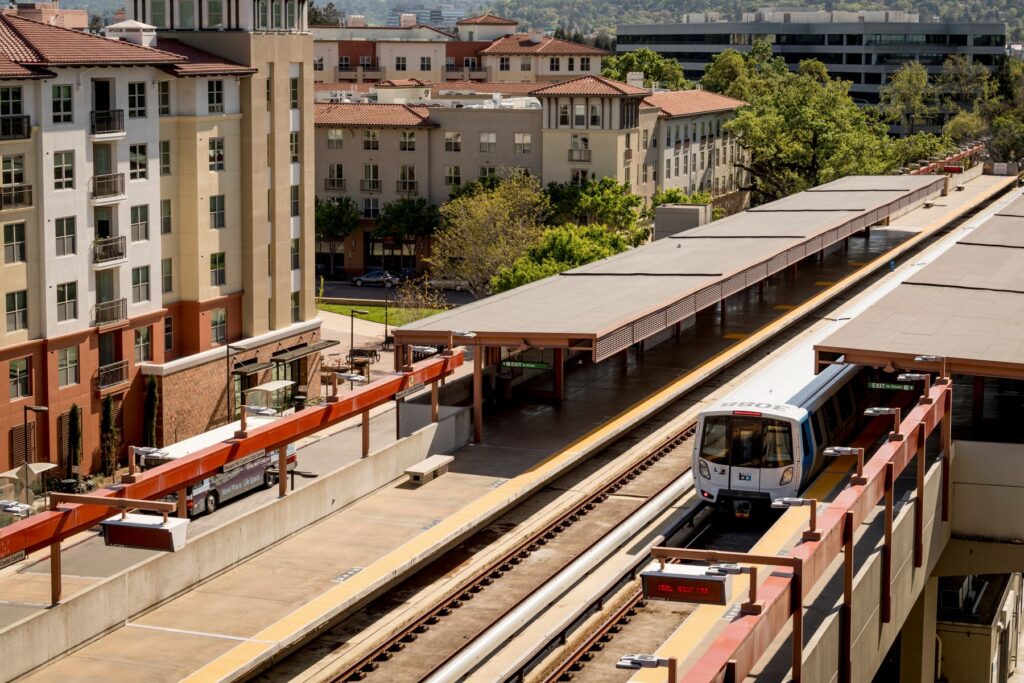The Metropolitan Transportation Commission (MTC), yesterday, Wednesday, Sept. 28, 2022, adopted a new Transit-Oriented Communities (TOC) Policy designed to boost the overall housing supply and increase residential densities in transit-rich areas throughout the Bay Area; spur more commercial development near transit hubs served by multiple agencies; promote bus transit, walking, biking and shared mobility in transit-rich areas; and foster partnerships to create transit-oriented communities where people of all income levels, racial and ethnic backgrounds, ages and ability levels can live, work and thrive. The newly adopted policy applies specifically to transit priority areas within a half-mile of BART, Caltrain, SMART, Capitol Corridor and ACE stations; Muni and VTA light-rail stations; Muni and AC Transit bus rapid transit stops; and ferry terminals.
Studies show people are more likely to ride transit if they live within half a mile of a rail station, ferry terminal or bus line. And jobs that are within a quarter-mile of transit often are more attractive to the Bay Area’s workforce.
The TOC Policy is the update to MTC’s 2005 Transit-Oriented Development (TOD) Policy. That set minimums for the average number of housing units (both existing and/or permitted housing units) within a half-mile of each new rail station funded through Regional Measure 2. However, according to MTC spokesperson Rebecca Long the new policy applies to any all existing and future transit priority areas.
“The Transit-Oriented Communities Policy is truly groundbreaking,” explained MTC Chair and Napa County Supervisor Alfredo Pedroza. “Using transportation funds as an incentive, the policy encourages cities and counties to upzone transit-rich areas so transit, walking and biking can be viable travel choices for more people, and so we can generate maximum value from the billions of taxpayer dollars that have been invested in our transit network over the years as well as new transit lines that will be built in the years to come. The policy specifically encourages the development of affordable housing and protects current residents from being displaced by new development.”
The TOC Policy links all four of the themes — transportation, housing, the economy and the environment — of Plan Bay Area 2050, the long-range transportation plan and sustainable communities strategy adopted by MTC and the Association of Bay Area Governments in 2021. Minimum residential density requirements range from 25 units per acre for locations within a half-mile of ferry terminals; SMART, ACE and Capitol Corridor stations; and Caltrains stations south of San Jose’s Tamien station up to 100 units per acre within a half-mile of BART stations in downtown San Francisco and Oakland, and within a half-mile of San Jose’s Diridon Station. The policy also eliminates minimum parking requirements in many transit-rich areas, allows for shared parking between residential and commercial uses, and mandates at least one secure bike parking space for each new dwelling unit.
MTC is the regional transportation planning, financing and coordinating agency for the nine-county San Francisco Bay Area.
Allen D. Payton contributed to this report.


Leave a Reply